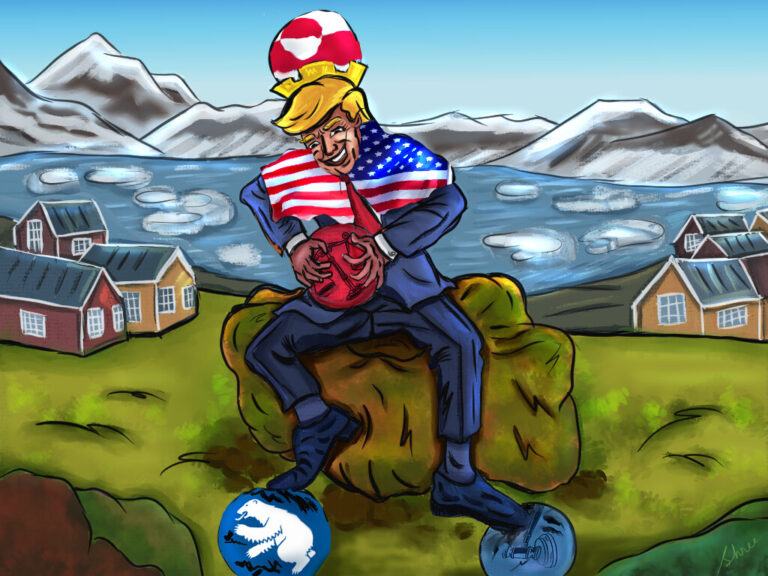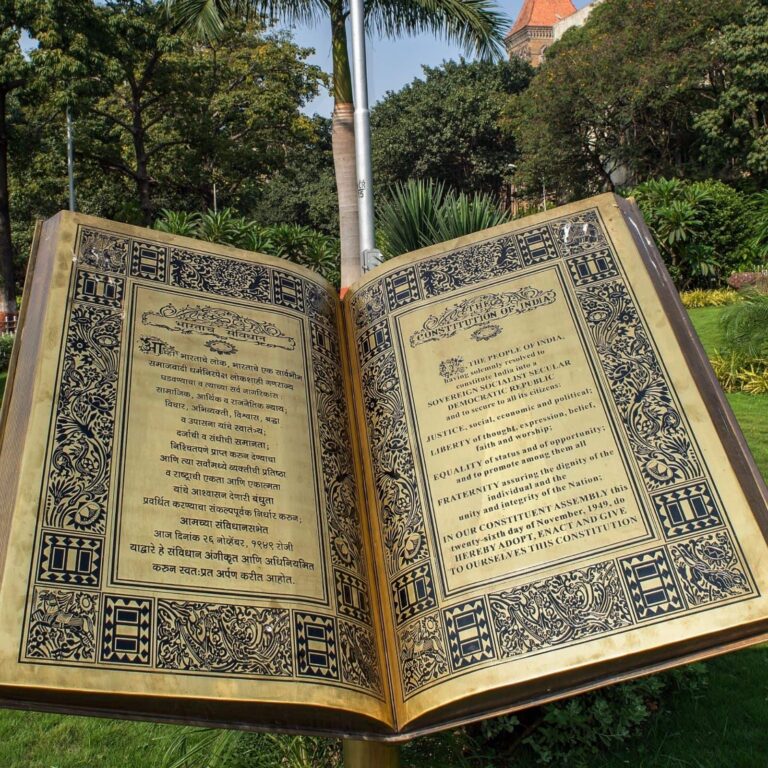Crux of Assam: Problems and the Parties Involved
Voting for the first phase of the Assam elections took place on 27th March and the second phase took place on 2 April. In the first phase, 47 out of 126 seats spread across 11 districts of Upper Assam, Northern Assam and some parts of central Assam’s Nagaon district went to the polls. In the second phase, 39 seats went for polls across the 13 districts in the Barak Valley, the Hill region, and parts of Central and Lower Assam. The third which is the last phase of the poll in the remaining 40 seats is scheduled on 6 April in Assam. The Bharatiya Janata Party (BJP) led National Democratic Alliance (NDA) assumed power after the conclusion of the 2016 assembly elections alongside Asom Gana Parishad(AGP) and Bodo People’s Front (BPF) winning 86 seats. The Indian National Congress (INC), which was the incumbent power back then, could only manage 26 seats and a vote share of only 31%. In 2021, the BJP has allied with AGP and the United People’s Party Liberal (UPPL). The Congress, on the other hand, has formed a mahajot (grand alliance) with parties like Badruddin Ajmal led All India Democratic Front (AIUDF), Rashtriya Janata Dal (RJD), Anchalik Gana Morcha(AGM) and the BPF. Three left parties, namely, Communist Party of India (CPI), Communist Party of India (Marxist) (CPIM) and Communist Party of India Marxist-Leninist (CPI ML) are also part of the mahajot alliance. The first phase of the polls saw an impressive 76% turnout.
WHAT’S IN IT FOR THE NDA
The ruling NDA seems to be confident about returning to power banking on the charismatic leadership of the state leaders like Sarbananda Sonowal and Himanta Biswas Sarma and the development work done by them. The central leaders like Narendra Modi and Amit Shah also enjoy massive popularity. BJP’s poll slogan, “Paakgharar pora potharoloi” (from the kitchen to the field), highlights the various schemes of the government like affordable housing, LPG connections, road building and cash transfer to the farmers. Schemes like the Orunodoi scheme, Pragyan Bharati scheme, Arundhuti scheme, Swami Vivekananda Assam Youth Empowerment Yojana (Svayem) have empowered the poor and needy. Infrastructural projects like building medical colleges and hospitals have helped in bridging the communication gap in the state which has historically been suffering from lack of development. Various central government schemes like Pradhan Mamtri Awas Yojana have ameliorated the lives of the poverty-stricken families. The ruling regime’s work during the COVID 19 pandemic seems to have been appreciated by the people. Himanta Biswas Sarma, who holds many portfolios including the Health Ministry, has been at the forefront and has been handling the pandemic crisis adequately. The passing of the Citizenship Amendment Act (CAA) which seeks to give citizenship rights to Hindu refugees who had come from Bangladesh saw massive protests across the state with various BJP leaders also coming out in support of the protesters. However, the BJP has been successful in covering a lot of ground since the protests broke out. The ruling government has successfully changed the narrative through infrastructural push and welfare schemes. Several anti CAA protesters have joined the BJP in recent times which has dented the movement. A relatively clean image is enjoyed by the ruling government. .The Bengali Hindus of Brahmaputra Valley and Barak Valley are immensely happy with the CAA as it gives them complete citizenship rights. BJP looks towards the consolidation of the Hindu votes across the state and looks to sweep the Upper Assam area. They are ably aided by the Rashtriya Swayamsevak Sangh (RSS) organisation and other Hindutva outfit groups. These groups have been successful in making the indigenous ethnic communities take a positive outlook towards the Hindu refugees while simultaneously demonising the Muslim refugees from Bangladesh. A number of top leaders from the old Assam movement led by the All Assam Students Union (AASU) and Asom Gana Parishad (AGP) now hold prominent positions in the government. The party’s leadership has not forgotten to repeatedly highlight the relatively peaceful tenure and the success of the Bodo Accord. The strong organisational base of BJP will definitely help them. The AGP, which is primarily a party for Assamese sub-nationalists, still enjoys a lot of popularity among the native Assamese as witnessed by the huge turnout in the rallies held by the party. The UPPL, which has been propped up by the BJP to counter the prospects of the BPF in the regions which are dominated by the Bodos, has seen some success with the Bodo votes getting divided between the BPF AND UPPL. The UPPL is led by ex leaders of the popular All Bodo Students Union (ABSU). BJP’s performance in the recent elections to the Bodoland Territorial Council (BTC) and the Tiwa Autonomous Council (TAC) give them the hope that they will return to power.
But all is not well within the NDA camp. BJP’s prospects in the upper Assam seats are not as rosy as in 2016 where BJP completely dominated the region. Upper Assam was the epicentre of the anti-CAA protests in Assam which took the state by storm. While the CAA debate has receded into the background, it is still present in the minds of the voters. The BJP has conveniently remained silent on the CAA implementation in Assam but its pro CAA speeches in neighbouring West Bengal have been noticed in Assam too. The BJP and AGP may have to confront native Assamese disenchantment over the CAA. Prafulla Kumar Mahanta, the founder-president of AGP and two times Chief Minister of Assam, has been dropped by the party due to his staunch anti-CAA stance. Mahanta’s home seat of Barhampur in Nagaon district has been allotted to the BJP which has resulted in severe disaffection among the members of the alliance. Many of the workers have vowed to work against the official nominees and support the rebel candidates who are contesting as independents. The BJP itself is divided among two major factions, one led by Sonowal and the other by Sarma. The high command has not announced a Chief Ministerial candidate and has given more tickets to Sarma loyalists which have not gone down well with the Sonowal camp. Sarma is considered to be a political genius and is credited for propping up minority governments like in Manipur. He is the convener of the North East Democratic Alliance (NEDA) and an invaluable asset to the party. BJP will be careful not to isolate him as that could severely damage the party’s prospects in the other north eastern states.
The workers of the party have been publicly demonstrating against some of the official candidates which hurt the image of the party. Issues like price rise and unemployment may also dent the party’s prospects. The party has faced severe criticism from its BPF over the Bodo Accord, with whom BJP partnered in 2016. The tea tribes of Assam, who supported the party solidly in 2016, are upset as they have not received better wages and Scheduled Tribe Status. The party’s extreme views on Hindutva can alienate the minority and liberal Hindu votes. The AGP’s flip flop on the CAA issue has been widely criticised.
WHAT’S IN IT FOR THE UPA
The Congress led UPA alliance faces a stiff task to regain Assam which it had ruled for 15 years. It had formed an alliance with the AIUDF, which is primarily a Muslim party having major presence in Muslim dominated areas of Barak Valley and lower Assam. About 35% of the Assamese population is Muslim and they are expected to vote as a block for the AIUDF. The BPF’s re-entry into the UPA camp will give it a major boost in the Bodoland areas. The BPF emerged as the single largest party in BTC elections even though it failed to assume power. Their performance was commendable considering they have been in power for a long time and was subjected to negligible anti-incumbency sentiment. The Congress is focusing on highlighting the promises that the BJP failed to deliver in the last 5 years. The Congress and AIUDF hopes to not cut into each other’s votes as it did in 2016, and hence got into an alliance. The UPA alliance has incessantly tried to include the CAA debate in the poll rallies as it believes that it will benefit from the anti CAA sentiment in Assam. The alliance has promised five poll guarantees which include creation of five lakh jobs for the youth, increasing the daily wage of tea garden workers to Rs 365, giving Rs 2000 to all house wives, giving 200 units free electricity to every household and passing a resolution in the Assam Assembly against implementation of the CAA if it is voted to power. The party has claimed that their campaign is getting a lot of support. Top Congress leaders like Rahul Gandhi, Priyanka Gandhi and Chattisgarh Chief Minister Bhupesh Baghel have been campaigning extensively in the state. They are targeting the votes of tea garden workers and the Adivasi peasants as these groups are crucial factors in many seats. The Congress expects to put up a tough fight in upper Assam against the BJP and hopes that AIUDF and BPF can emerge as victors in their respective strongholds. The Communist parties can shift the votes in favour of the UPA in 7-8 constituencies.
The UPA also faces its own share of problems. The death of former Congress Chief Minister Tarun Gogoi has weakened the party’s rank and file. People have not forgotten the Congress regime which was marred by rampant corruption, the APSC scam, factionalism in the party and the extensive killing of the one-horned rhino. The alliance has thus far not been able to effectively counter the “development” narrative of the BJP. The Congress lacks a prominent face in the state to match up to popular faces like Sonowal and Sarma. The party remains non-committal over the fate of CAA as seen with the Sushmita Dev incident. The AIUDF has been criticised for being a “communal party” by all of its opponents and this can result in further polarisation which will help in the consolidation of Hindu votes as desired by BJP. BPF also faces a stiff challenge from UPPL in the Bodoland areas. Several protests were witnessed during the seat sharing talks between the allies in UPA which shows that the transfer of votes may not take place as the allies expect. The AIUDF and Congress are contesting against each other in some seats which they have termed as “friendly contests”.
THE THIRD FRONT
The CAA gave birth to two new parties namely, the Adam Jatiya Parishad(AJP) and the Raijor Dal led by the jailed peasant’s activist Akhil Gogoi. The AJP’s creation took place at the behest of All Assam Students’ Union and the Asom Jatiyotabadi Yuba Chatra Parishad. The Raijor Dal was created by the Akhil Gogoi led Krishak Mukti Sangram Samiti and 69 allied organisations. The main agenda of these two parties is to stop the CAA from being implemented. Therefore, they are expected to hurt the UPA’s chances in some seats where they will cut into the anti CAA votes. They have termed both the BJP and AIUDF as “communal” parties and look to provide a third alternative. The fortunes of the alliance rest solely on Gogoi who is known for his fiery speeches and for crusading against land grab attempts by the government. He was arrested during the anti CAA protests on charges of sedition and inciting violence. His mother is leading the campaign for the Alliance. The party is not expected to win anything, however, due to lack of organisational structure and experience. Gogoi’s letter from jail has alienated a lot of his supporters and drew severe reactions from various sectors.
Thus, the Assam elections are shaping to be much closer than initially anticipated with various issues dominating the political discourse. Retaining Assam will be vital for NDA as it seeks to solidify its gains and continue to be a major play in the north-east. The UPA, on the other hand, looks to regain power in the state on the back of the anti CAA movement.
Image Credits: Election Commission of India on Wikimedia Commons









This article gives a very interesting perspective to looks at the education.